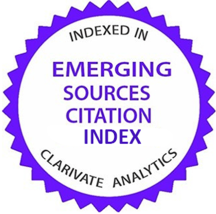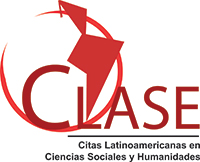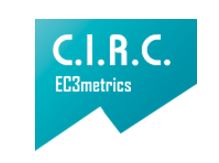Authors
Abstract
Double presence originated as a concept to describe female employment and its social legitimization, along with the dependence of
women on domestic and family work. Since then, gender studies have used this term and others such as second shift, double shift and double burden to address the demands of paid work and household chores. However, the complexity of managing both spheres at the same time, initially described by double presence, seems to have been diluted in the various ways of operationalizing these concepts. Objective: To systematically review the conceptual and operational definitions of double presence and associated concepts (second shift, double workday and double workload). Methods: A systematic narrative review was conducted, following the PRISMA declaration guidelines, and its protocol was registered in PROSPERO. Results: A search was conducted in three databases (Web of Science, Scopus and SciELO), and a total of 569 articles were identified. Of these, 41 met the inclusion criteria (empirical studies with a conceptual or operational definition of double presence or associated concepts, with primary data and published in English or Spanish). Six main themes emerged associated with the definition of double presence: (1) a psychosocial phenomenon observable in people working both in the paid work environment and in the home-family environment; (2) experienced predominantly by women; (3) characterized by tasks synchrony; (4) implies difficulty in balancing work and family demands; (5) represents a psychosocial risk; and (6) generates emotional tensions and/or consequences in the physical and mental health of those who experience it. In terms of operationalization, a gap was found between the conceptual definition and the instruments used to measure it. Discussion: The review shows that the two distinctive components of the double presence phenomenon are the synchronicity between work and family life, and the difficulties in balancing the demands of these spheres. However, the first component has been poorly operationalized. The gap identified between conceptual definitions and their operationalization is analyzed.
References
Arraigada, M. C., & Pujol-Cols, L. (2018). Psychometric properties of the Copsoq- Istas 21 Psychosocial Risk Questionnaire and application in Argentine university teachers. Administration Notebooks, 30(55), 97-125. https://doi.org/10.11144/Javeriana.cao30-55.ppcr.
Balbo, L. (1978). La doppia presenza. Inchiesta, 3-11.
Ballakrishnen, S., Fielding-Singh, P., & Magliozzi, D. (2018). Intentional Invisibility: Professional Women and the Navigation of Workplace Constraints. Sociological Perspectives, 62(1), 1-19. https://doi.org/10.1177/0731121418782185.
World Bank (2024). Women, business and the law 2024. World Bank Group. https://wbl.worldbank.org Blanch, A. & Solé, S. (2023). Work-family conflict, wellbeing and strain: Sex differences and children at home. International Journal of Psychology, 58(2), 116-123.
https://doi.ufro.elogim.com/10.1002/ijop.12890
Beermann, B., & Nachreiner, F. (1995). Working shifts-different effects for women and men? Work and Stress, 9(2-3), 289-297. https://doi.org/10.1080/02678379508256565.
Burke, R. & Mckeen, C. (1993). Career Priority Patterns among Managerial and Professional Women. Applied Psychology: An International Review, 42(4), 341-352. https://doi.org/https://doi.org/10.1111/j.1464-0597.1993.tb00749.x
Capellin, P. (1978). Capitalist productive structure and female labor: The conditions of existence of the female labor force in Brazil in Demography and Economics. Demography and Economics, 12(1),37-5.
Carbajal, J. (2018). Patriarchal culture’s influence on women’s leadership ascendancy. The Journal of Faith, Education, and Community, 2(1), 1-23.
Castelao-Huerta, I. (2020). The discreet habits of subtle violence: an approach to the experiences of women full professors in neoliberal times. Gender and Education, 34(2), 216-230. https://doi.org/10.1080/09540253.2020.1815660
Ceballos-Vásquez, P., Cancino-Grillo, M., González-Palacios, Y., & Paravic, T. (2020). Psychosocial risk profile in healthcare workers: An elementary tool for its intervention. Journal of Spanish Association of Occupational Medicine Specialist, 29(4), 323-329.
Charmes, J. (2019). The unpaid care work and the labour market : an analysis of time use data based on the latest world compilation of time-use surveys. International Labour Organization (ILO).
Ciabattari, T. (2021). Sociology of families: change, continuity, and diversity (SAGE Pub- lications Inc., Ed.).
Cortés-Rodas, L., Ruiz-Turizo, M. J., & Flórez-Marín, G. (2021). Women and work: family transformations after their incorporation into the labor scenario. Latin American Family Studies, 13(2), 78-100. https://doi.org/10.17151/rlef.2021.13.2.5. https://doi.org/10.17151/rlef.2021.13.2.5.
Dhameeth, G. S., Wakunuma, K., Männikkö Barbutiu, S., & De Silva, T. D. (2021). Empowerment Through Women Entrepreneurship. Jwee, 2021(1-2), 121-146. https://doi.org/10.28934/jwee21.12.pp121-146.
DeGroot, J. M., & Vik, T. A. (2019). The Weight of Our Household Rests on My Shoulders: Inequity in Family Work. Journal of Family Issues, 41(8), 1258-1281. https://doi.org/10.1177/0192513X19887767
Díaz Carrión, I. A. & Ceyca Lugo, A. (2022). Empowerment and impact of care work on women entrepreneurs in Tijuana (Mexico). Economy, Society and Territory, 22(70), 833-864. https://doi.org/10.22136/est20221735
Dugan, A., & Barnes-Farrell, J. (2018). Working mothers’ second shift, personal resources, and self-care. Community, Work and Family, 23(1), 62-79. https://doi.org/10.1080/13668803.2018.1449732.
Engelhardt, L., Mack, J., Weise, V., Kopp, M., Starke, K. R., & Garthus-Niegel, S. (2023). The COVID-19 pandemic: Implications for work-privacy-conflict and parent-child-bonding in mothers andfathers. Children and Youth Services Review, 155. https://doi.org/10.1016/j.childyouth.2023.107264
Ericsson, U., Pettersson, P., Rydstedt, L., & Ekelund, E. (2021). Work, family life and recovery: An exploratory study of “the third shift.” Work, 70(4), 1131-1140. https://doi.org/10.3233/WOR-213624.
Esparza, M. (2020). Time use, domestic work and the double workday of women in Hermosillo, Sonora Mexico, an analysis from a gender perspective. Work and Society, 21(35), 351-374.
Fardella, C., & Corvalán, A. (2020). Time in work-life conflict: The case of academic women in managerial universities. Psychoperspectives, 19(3), 1-12. https://doi.org/10.5027/psicoperspectivas-Vol19-Issue3-fulltext-2051
Fellegi, Z., Kočí, K., & Benešová, K. (2023). Work and Family Balance in Top Diplomacy: The Case of the Czech Republic. Politics and Gender, 19(1), 220-246. https://doi.org/10.1017/S1743923X21000489.
García, M., Iglesias, S., Saleta, M., & Romay, J. (2016). Psychosocial risks in university teaching staff:diagnosis and prevention. Journal of Work and Organizational Psychology, 32(3), 173-182. https://doi.org/10.1016/j.rpto.2016.07.001
Gontero, S., & Vezza, E. (2023). Women’s labor participation in Latin America: contribution to economic growth and determinants. www.issuu.com/publicacionescepal/stacks
Guadarrama, R. (2006). Identities, resistance and conflict in global chains. Desacatos, 21, 67-82.
Güilgüiruca, M., Meza, K., Góngora, R., & Moya, C. (2015). Psychosocial risk factors and perceived stress in workers of an electrical company in Chile. Occupational Medicine and Safety, 61(238), 57-67.
Hernández, Y., & del Carpio Ovando, P. S. (2023). Difficulties in women mothers of school-age children during COVID-19 confinement. Science UAT, 17(2), 83-94.
Hernández-Limonchi, M. and Ibarra-Uribe, L. (2020). Two incomes, two caregivers. Barriers to workfamily reconciliation. Latin American Journal of Family Studies, 12 (2), 13-26. DOI: 10.17151/rlef.2020.12.2.2.2.
Hochschild, A. (1989). The Second Shift. NY: Avon Books.
Lahiri-Dutt, K., & Sil, P. (2014). Women’s ‘double day’ in middle-class homes in small-town India.Contemporary South Asia, 22(4), 389-405. https://doi.org/10.1080/09584935.2014.979762
Lenneis, V., & Pfister, G. (2016a). Health, physical activity and the body: an inquiry into the lives of female migrant cleaners in Denmark. International Journal of Sport Policy, 8(4), 647-662. https://doi.org/10.1080/19406940.2016.1220408
Lenneis, V., & Pfister, G. (2017b). Too tired for exercise? The work and leisure of female cleaners in Denmark. Leisure Studies, 36(4), 530-541. https://doi.org/10.1080/02614367.2016.1216579
Mamaril, M., & Lu, J. (2019). Agriculture? Roll up Your Sleeves: Why Is It Important to Highlight Gender in Agriculture? Journal of International Women’s Studies, 20(3), 139-153. https://vc.bridgew.edu/jiws
Márquez, M., & Márquez, M. (2015). Biomechanical and psychosocial risk factors present in the Venezuelan meat industry. Science & Work, 17(54), 171-176. www.cienciaytrabajo.cl|171/176.
McDermott, E. (1998). Barriers to women’s career progression in LIS. Library Management, 19(7), 416-420. https://doi.org/10.1108/01435129810232036.
Moncada, S., Llorens, C., Navarro, A., & Kristensen, T. S. (2005). ISTAS21: Spanish version of the Copenhagen psychosocial questionnaire (COPSOQ). Scandinavian Journal of Public Health, 33(suppl. 66), 302–308.
Moreno, N., Moncada, S., Llorens, C., & Carrasquer, P. (2010). Double presence, paid work, and domestic-family work. New Solutions, 20(4), 511-526. https://doi.org/10.2190/NS.20.4.h.
Ochoa Rodríguez, A., & González Victoria, R. M. (2023). Social representations of traditional gender roles among women with leadership position in the Mexican business sector: continuities and transformations. Latin American Journal of Psychology, 55(2), 115–132.
Page, M., McKenzie, J., Bossuyt, P., ... Moher, D. (2021). The PRISMA 2020 statement: An updated guideline for reporting systematic reviews. The BMJ, 372(71), 1-9. https://doi.org/10.1136/bmj.n71.
Paoletti, J., Derrick, J., Fagundes, C., & Leonard, K. (2022). The Effects of Strain-Based Work-Parenting Conflict on Double Income Couples’ Energy. International Journal of Environmental Research and Public Health, 19(15), 1-13. https://doi.org/10.3390/ijerph19159125. https://doi.org/10.3390/ijerph19159125
Paricio del Castillo, R. & Polo Usaola, C. (2020). Maternity and maternal identity: therapeutic deconstruction of narratives. Journal of de Spanish Association of Neuropsychiatry, 40(138), 33-54.
Perkins, W. & Demeis, D. (1996). Gender and family effects on the second-shift domestic activity of college-educated young adults. Gender & Society, 10(1), 78-93.
Pujol-Cols, L., Foutel, M., & Porta, L. (2019). Psychosocial Risks in the Academic Profession: An interpretative discourse analysis of Argentine university teachers. Work and Society, 20(33), 197-223.
Rojas, M., & Rodríguez, J. (2010). Psychosocial risk factors in Geriatric Nursing faculty at Spanish universities (1apart). Gerokomos, 21(4), 158-166.
Siddaway, A., Wood, A., & Hedges, L. (2019). How to Do a Systematic Review: A Best Practice Guide for Conducting and Reporting Narrative Reviews, Meta-Analyses, and Meta-Syntheses. Annual Reviews of Psychology, 70(1), 747-770. https://doi.org/10.1146/annurev-psych-010418.
Smoktunowicz, E., Cieslak, R., & Demerouti, E. (2017). Interrole conflict and self-efficacy to manage work and family demands mediate the relationships of job and family demands with stress in the job and family domains. Anxiety, Stress and Coping, 30(5), 485-497. https://doi.org/10.1080/10615806.2017.1329932.
Stenning, A., & Hardy, J. (2005). Public Sector Reform and Women’s Work in Poland: “Working for Juice, Coffee and Cheap Cosmetics!”. Gender, Work and Organization, 12(6), 503-526. https://doi.org/10.1111/j.1468-0432.2005.00286.x
Suasti, Y., Montessori, M., & Putri, E. (2019). Commuting Women Farm Labourers: Multiple Loads And The Marginalisation Of Minangkabau Women In Rural Areas. Option: Journal of Human and Social Sciences, 22, 2899-2909.
Tena, O. (2013). Strategies to reconcile domestic and paid work duties in Mexican police women: A stepping stone to gender equality?. Colombian Act f Psychology, 16(2), 81-91. https://doi.org/10.41718/ACP.2013.16.2.8
The EndNote Team (2013). EndNote X7. Clarivate Analytics.Väänänen, A., Kevin, M., Ala-Mursula, L., Pentti, J., Kivimäki, M., & Vahtera, J. (2004). The double burden of and negative spillover between paid and domestic work: Associations with health among men and women. Women and Health, 40(3), 1-18. https://doi.org/10.1300/J013v40n03_01
Vázquez, V., Cárcamo, N., & Hernández, N. (2012). Between Office, motherhood and double duty. Women municipal presidents in Oaxaca. Latin American Profiles, 20(39), 31-57.
Velázquez Olmedo, C. E., & Palos Andrade, P. (2022). School parental self-efficacy and involvement during confinement by COVID-19. Mexican Journal of Educational Research, 27(95), 1305-1322.
Wang, F. &Wang, Z. (2024). Work-family conflict influences the turnover intention of Chinese rural preschool teachers: A moderated mediation model. Social Behavior & Personality: an international journal. Vol. 52 Issue 2, p1-10. 10p. DOI: 10.2224/sbp.12885.
Wharton, C. (1994). Finding time for the “second shift”: The Impact of Flexible Work Schedules on Women’s Double Days. Gender & Society, 8(2), 189-205. https://doi.org/10.1177/089124394008002004
Ziegler, Y., Graml, R., Uli, V., & Khachatryan, K. (2023). Motherhood Gap and Employer Discrimination. A Qualitative Investigation in the German Context. Organizacija, 56(4), 281-296. https://doi.org/10.2478/orga-2023-0019.
Zolondek, C. (2022). Disruptions, Decisions and Discourses: Mothering in the Context of the COVID-19 Pandemic. Canadian Journal of Family and Youth, 14(2), 346-429. http://ejournals,library,ualberta.ca/index/php/cjfy

 PDF
PDF
 FLIP
FLIP

























